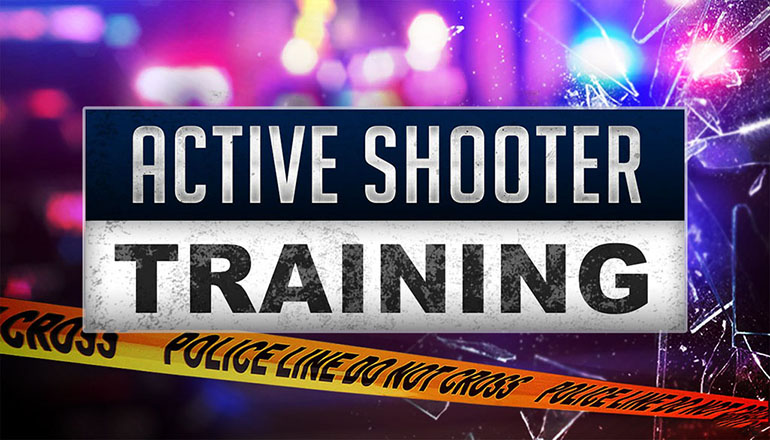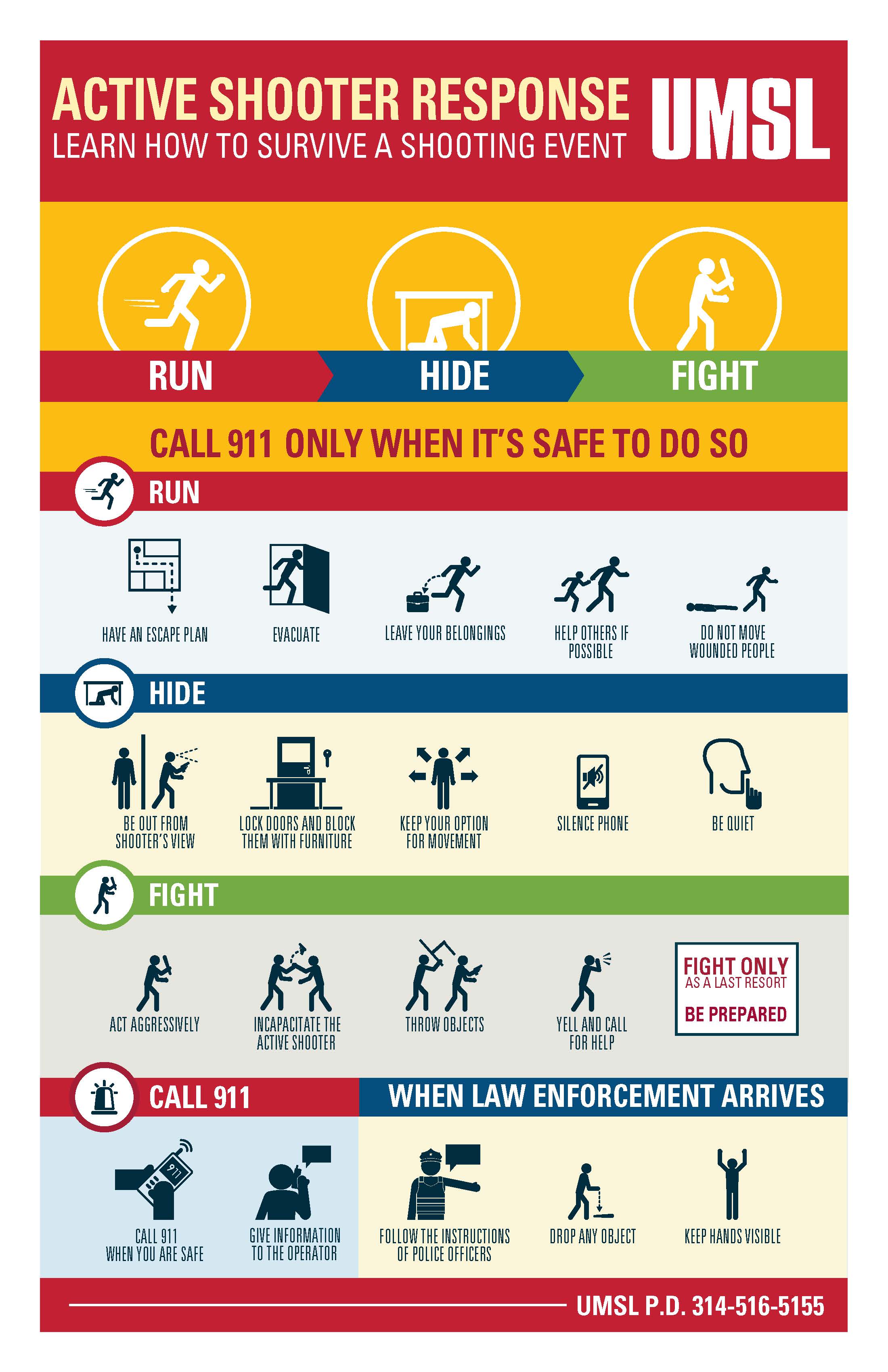Best Practices for Applying Active Shooter Training in Your Business
Best Practices for Applying Active Shooter Training in Your Business
Blog Article
Carrying Out Active Shooter Training: Ideal Practices for Producing a Safe and Prepared Community Environment
As neighborhoods face the upsetting fact of energetic shooter occurrences, the implementation of thorough training programs becomes essential. What are the vital components that can change a typical training program right into a robust model for area strength?

Recognizing the Demand for Training
In an era marked by enhancing events of physical violence in public areas, understanding the need for active shooter training has never ever been more vital. The prevalence of mass capturings throughout various environmentsâEUR" such as schools, offices, and purchasing centersâEUR" underscores the seriousness for people and organizations to be gotten ready for such emergency situations. Energetic shooter scenarios can unfold swiftly, leaving little time for individuals to react properly. Comprehensive training campaigns can outfit participants with the understanding and skills to react emphatically.
Moreover, the emotional impact of physical violence on individuals and neighborhoods can not be overstated. Training cultivates a feeling of empowerment and readiness, allowing people to feel more protected in their surroundings. It likewise advertises a culture of safety and security, where awareness and caution come to be important parts of daily life. The advantages of active shooter training expand past instant feedback; they include enhancing interaction protocols and improving total precaution within organizations.
Trick Elements of Effective Programs
Effective active shooter training programs integrate numerous crucial elements that improve readiness and reaction abilities. First, comprehensive curriculum development is necessary, guaranteeing that training material is appropriate, evidence-based, and tailored to the particular needs of the organization or area. This includes comprehending the characteristics of energetic shooter cases and the mental influence on people entailed.
2nd, sensible training circumstances must be used to replicate potential circumstances, enabling individuals to practice decision-making and feedback techniques in a regulated atmosphere. These drills assist in muscular tissue memory and develop self-confidence amongst participants.
Third, a concentrate on interaction protocols is vital. Establishing clear lines of communication among police, emergency responders, and participants ensures collaborated responses throughout an occurrence. Regular updates and correspondence course assist maintain interaction paths clear and efficient.
4th, recurring assessment and comments devices need to be integrated into the training program - active shooter training. Assessing the efficiency of training via participant comments and efficiency metrics allows for constant enhancement
Lastly, cultivating a culture of safety and readiness within the community urges caution and positive steps, making sure that individuals are not only trained however also taken part in preserving a protected atmosphere.
Engaging Community Stakeholders

To successfully involve these stakeholders, it is vital to interact the purposes and advantages of the training. Hosting educational sessions can assist clarify the training's objective, address worries, and describe the duties each stakeholder may play. Developing a stakeholder advising committee can help with ongoing dialogue, enabling for diverse perspectives and insights to be integrated right into the training program.
Structure relationships with area leaders and organizations is likewise important. Their support can improve outreach initiatives, rise participation, and make certain that training is customized to the special requirements of the neighborhood. In addition, stakeholders can help in distributing info and sources, strengthening the message of security and find more preparedness.
Inevitably, involving community stakeholders not just enhances the training effort however additionally grows a feeling of possession amongst citizens, leading to a more resistant and educated area with the ability of responding properly to possible hazards.
Training Distribution Techniques
Using a variety of training delivery approaches is important to suit the diverse knowing styles and demands of individuals in active shooter training programs (active shooter training). Effective training can take numerous kinds, consisting of lectures, hands-on simulations, online modules, and interactive workshops. Each approach offers an unique objective and can enhance the overall understanding experience

On the internet modules provide versatility and accessibility, making it possible for individuals to find out at their very own speed. These can consist of videos, quizzes, and conversations to click site assess understanding. Interactive workshops motivate group discussions and problem-solving, promoting team effort and communication skills.
Incorporating a blended approach that integrates these approaches not just improves the training experience yet additionally makes certain that participants are better prepared to respond successfully in case of an active shooter scenario (active shooter training). By resolving numerous discovering preferences, organizations can develop a much more informed and responsive check this site out area
Constant Analysis and Renovation
Routine evaluation and improvement of energetic shooter training programs are crucial to preserving their relevance and efficiency. As risks develop, so should the approaches and methodologies utilized in training. Constant analysis makes sure that training material shows the current intelligence on energetic shooter occurrences, integrating lessons gained from recent events and adjusting for arising patterns.
To facilitate this process, companies need to develop responses devices that consist of participant analyses, expert evaluations, and occurrence debriefs. Gathering information on participant performance during drills and exercises is vital, as it highlights locations requiring enhancement and notifies future training sessions. Furthermore, involving with police and emergency situation -responders can give valuable insights into the usefulness and applicability of training procedures.
On a regular basis set up reviews of training materials and techniques need to be mandated, cultivating a setting of innovation and adaptability. Organizations must also urge a culture of ongoing discovering, where team member feel equipped to suggest changes based on their experiences. By committing to constant examination and enhancement, companies not just enhance the efficiency of their active shooter training programs however also reinforce their overall commitment to security and preparedness within the neighborhood.
Final Thought
To conclude, effective execution of active shooter training necessitates a comprehensive technique that prioritizes neighborhood interaction and sensible simulations. By establishing tailored educational programs, including varied training methods, and promoting collaboration among stakeholders, areas can improve preparedness. Continual assessment and comments systems are vital for adapting programs to emerging hazards, thus enhancing general security. Ultimately, a commitment to continuous training and renovation grows a culture of caution and preparedness, making certain a safer atmosphere for all community participants.
Report this page